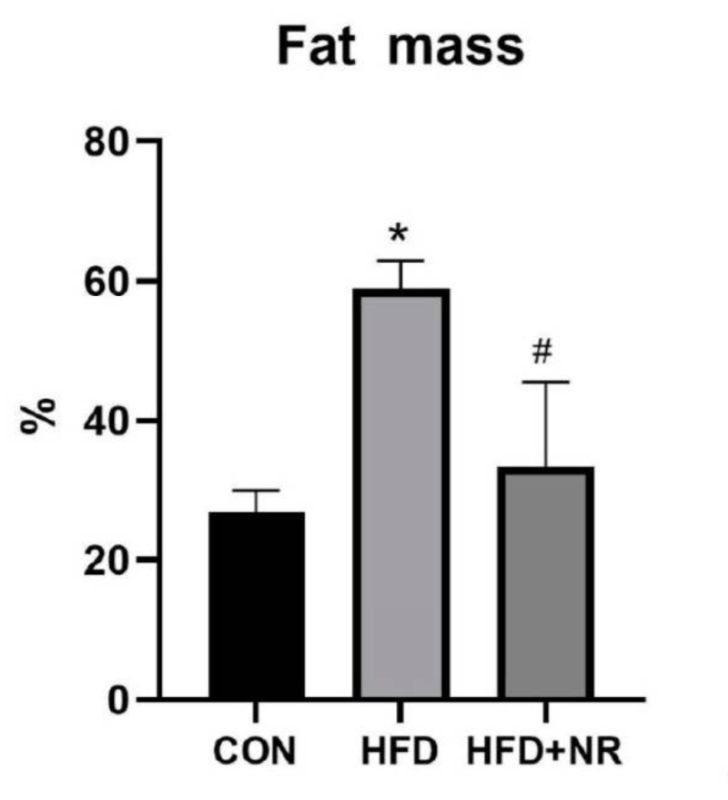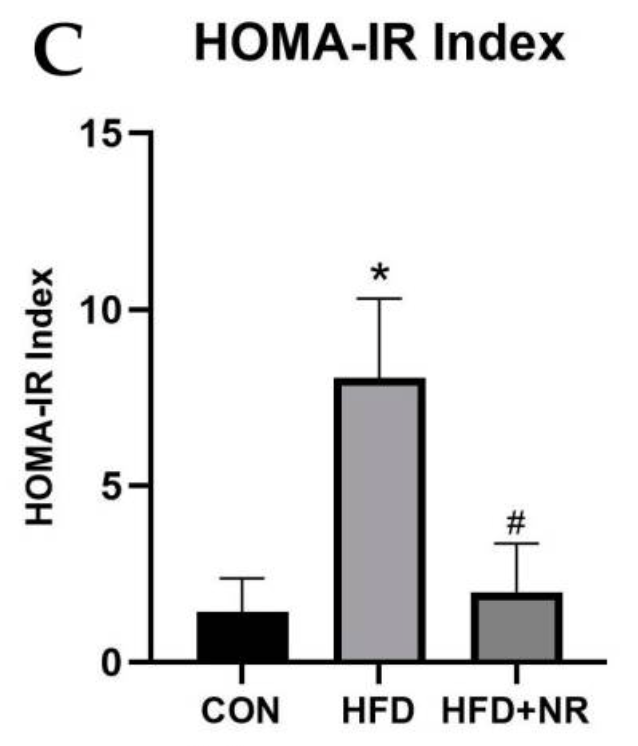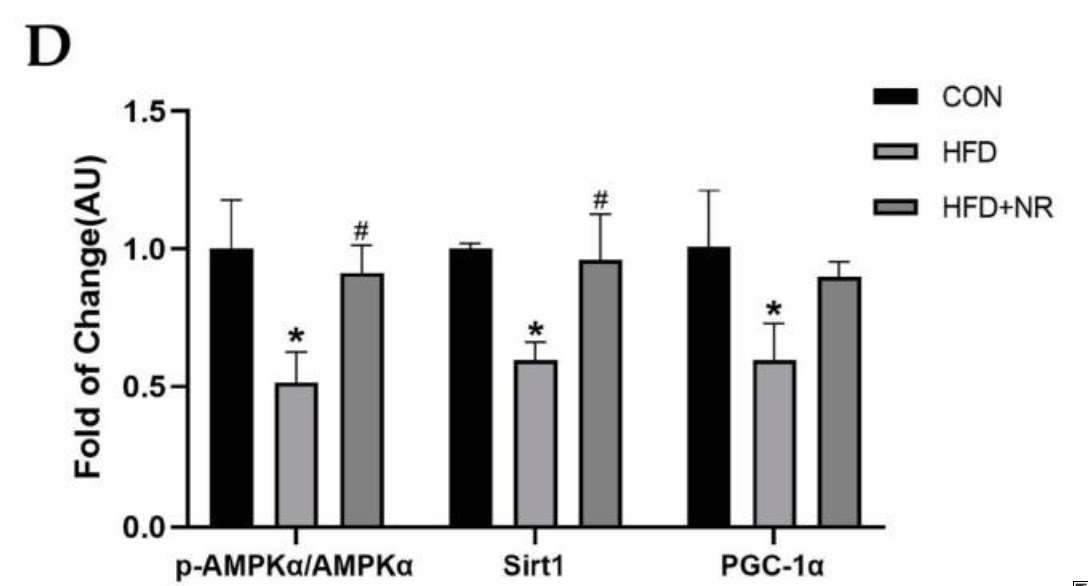This study investigated the effects of NR supplementation on body composition, lipids, and insulin resistance in mice fed a high-fat diet.
“Inadequate NAD biosynthesis in skeletal muscle, adipose tissue and the liver leads to the pathogenesis of obesity-associated metabolic abnormalities, including IR.”
Key points
NR supplementation protected mice on a high-fat diet in several ways:
- Reduced weight gain and prevented increases in fat mass
- Improved lipid levels in serum and the liver
- Promoted glucose metabolism and insulin sensitivity
- Improved mitochondrial function and reduced oxidative stress
24-Week Study Investigates the Effect of NR Supplementation in Mice on a High-Fat Diet
Eight-week old male mice were divided into three groups (n = 5-7 mice/group):
- Control (13% kcal fat)
- HFD (60% kcal fat)
- HFD + NR (400 mg/kg/d B·W)
Measures of glucose metabolism and insulin sensitivity were measured following an overnight fast.
The mice were given the respective diets for 24 weeks.
Increases in Body Weight and Fat Mass were Prevented
NR supplementation prevented HFD-induced weight gain and increases in fat mass.

The figure shows percent fat mass (the amount of fat in the body, expressed as a percentage of total body weight) for the mice fed a standard diet (black bar), mice fed a HFD (light gray bar), and mice fed a HFD and supplemented with NR (dark gray bar).
Notice NR supplementation in mice fed a HFD prevented the significant increase in percent fat mass seen in mice fed an untreated HFD.
Fat Metabolism Remained Healthy
NR supplementation improved measures of lipid metabolism:
- HFD-induced elevations in total cholesterol and LDL levels were inhibited
- Liver cholesterol and triglyceride accumulation was prevented
Mice were Protected Against Insulin Resistance
Supplementation with NR protected against HFD-induced insulin resistance and preserved healthy glucose metabolism.
“The HOMA-IR index of HFD-fed mice is significantly higher than mice in the control group, which indicates that HFD induced insulin resistance in mice.”

Mice fed a standard HFD (light gray bar) showed a significant increase in HOMA-IR index, indicating insulin resistance. This increase was prevented when mice on a HFD were supplemented with NR (dark gray bar).
“NR could prevent HFD-induced IR, which can be shown according to the HOMA-IR index“
HFD-fed mice supplemented with NR also showed reduced fasting blood glucose and insulin levels, indicating healthy glucose metabolism.
NR Supplementation Preserved Mitochondrial Function in the Skeletal Muscle
The researchers then sought to determine the underlying mechanism of NR’s effects.
“HFD-induced mitochondrial dysfunction has been recognized as one of the important mechanisms in the development of IR.”
They found the NR prevented the HFD-induced changes in three proteins important for mitochondrial function in the skeletal muscle of the mice:
- AMPK – maintains energy balance
- PGC-1α – boosts mitochondrial function
- Sirt1 – regulates age-related processes

Compared to mice fed a standard diet (black bars), the mice fed a HFD (light gray bars) showed significantly lower levels of AMPK, Sirt1, and PGC-1α. NR supplementation in mice on a HFD (dark gray bars) effectively prevented the HFD-induced reduction in these proteins; their protein levels are comparable to those of the mice on a standard diet (black bars).
Further analysis revealed mice supplemented with NR were protected from HFD-induced oxidative stress in the skeletal muscle.
“NR can activate the AMPK pathway, restore mitochondrial function, alleviate oxidative stress and reverse IR induced by HFD.”
Conclusion
This study showed that NR supplementation protected mice from HFD-induced metabolic dysfunction, specifically through protecting mitochondrial function in the skeletal muscle.
“Our results revealed that NR supplementation can replenish NAD to prevent IR in HFD-fed mice, which can be further validated in human trials on obese/overweight individuals or aged individuals whose NAD levels might be lower than those of healthy people.”
